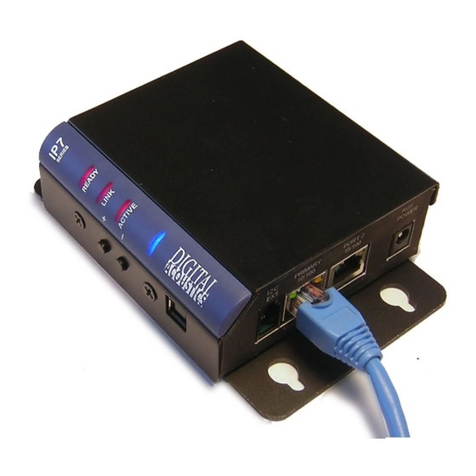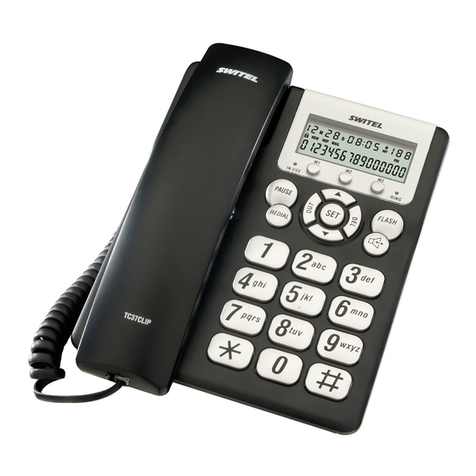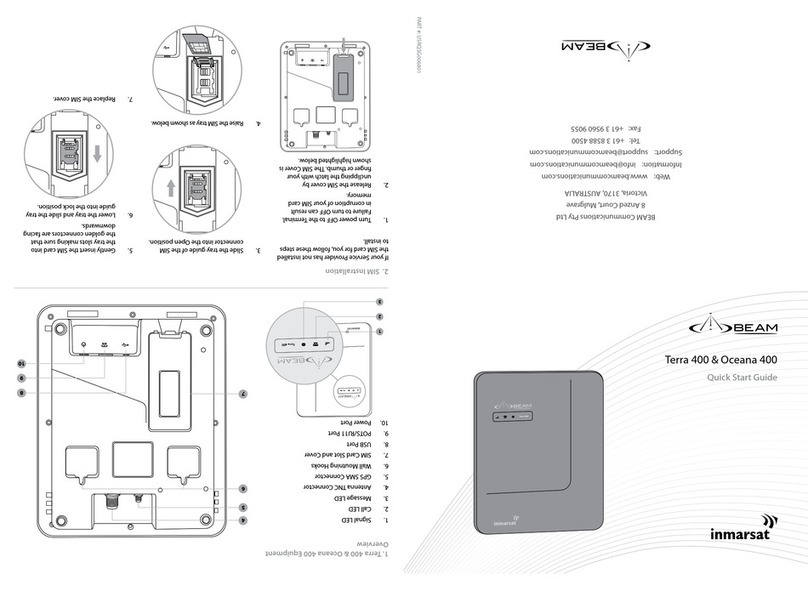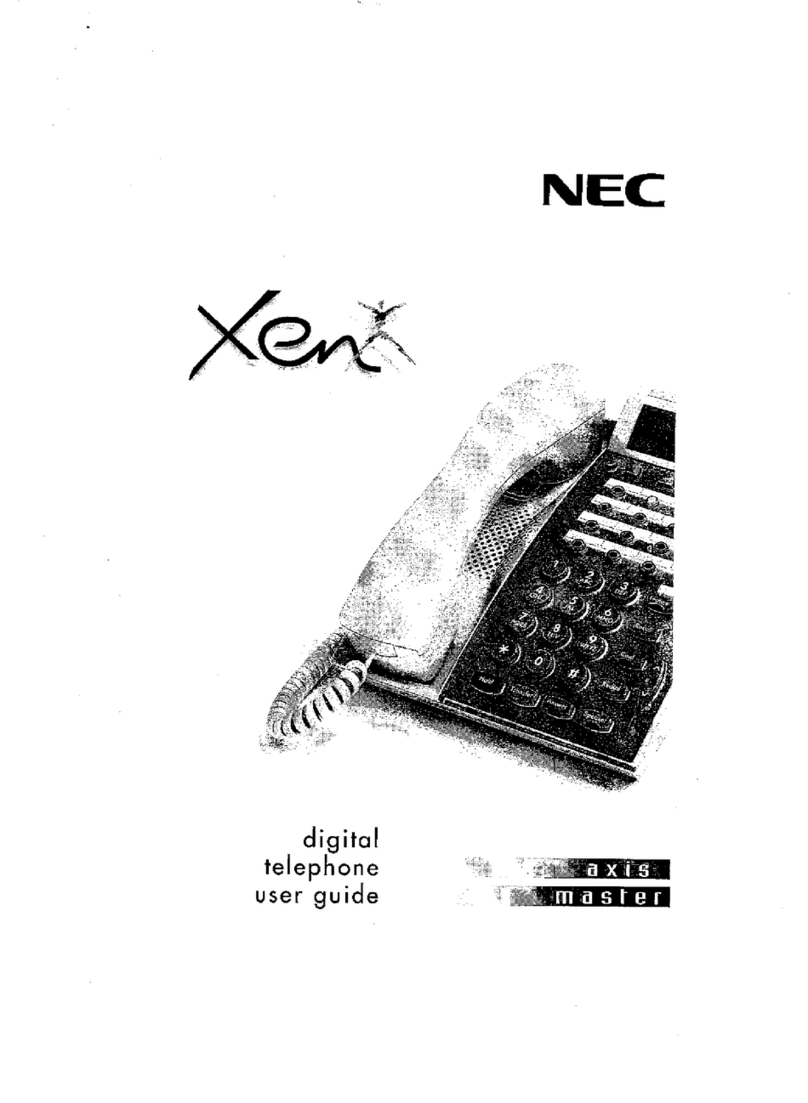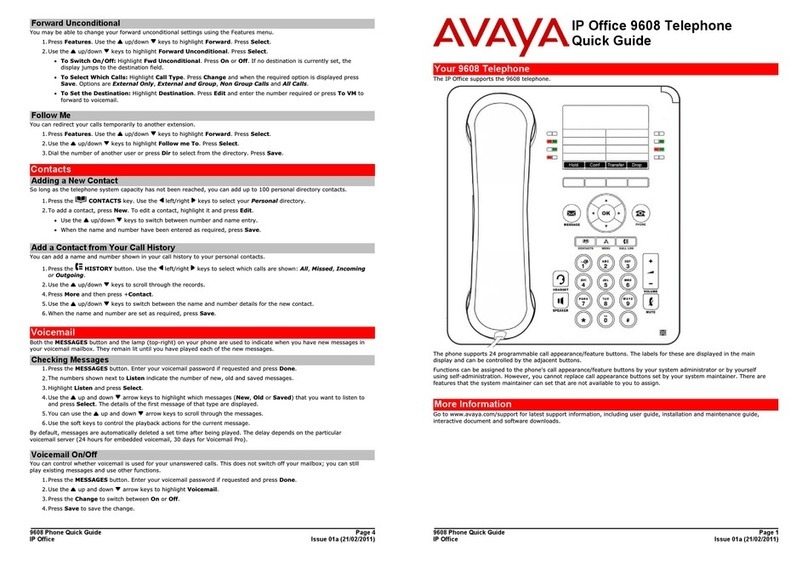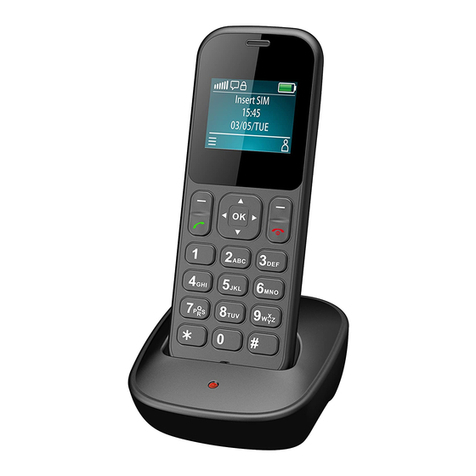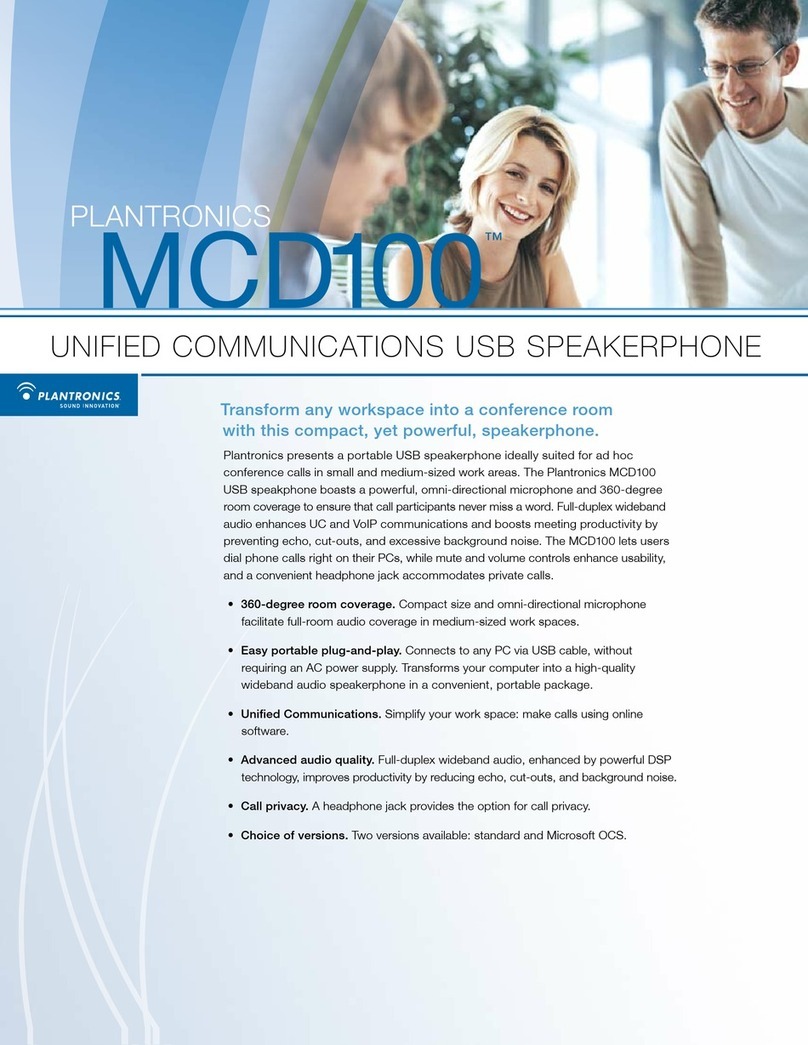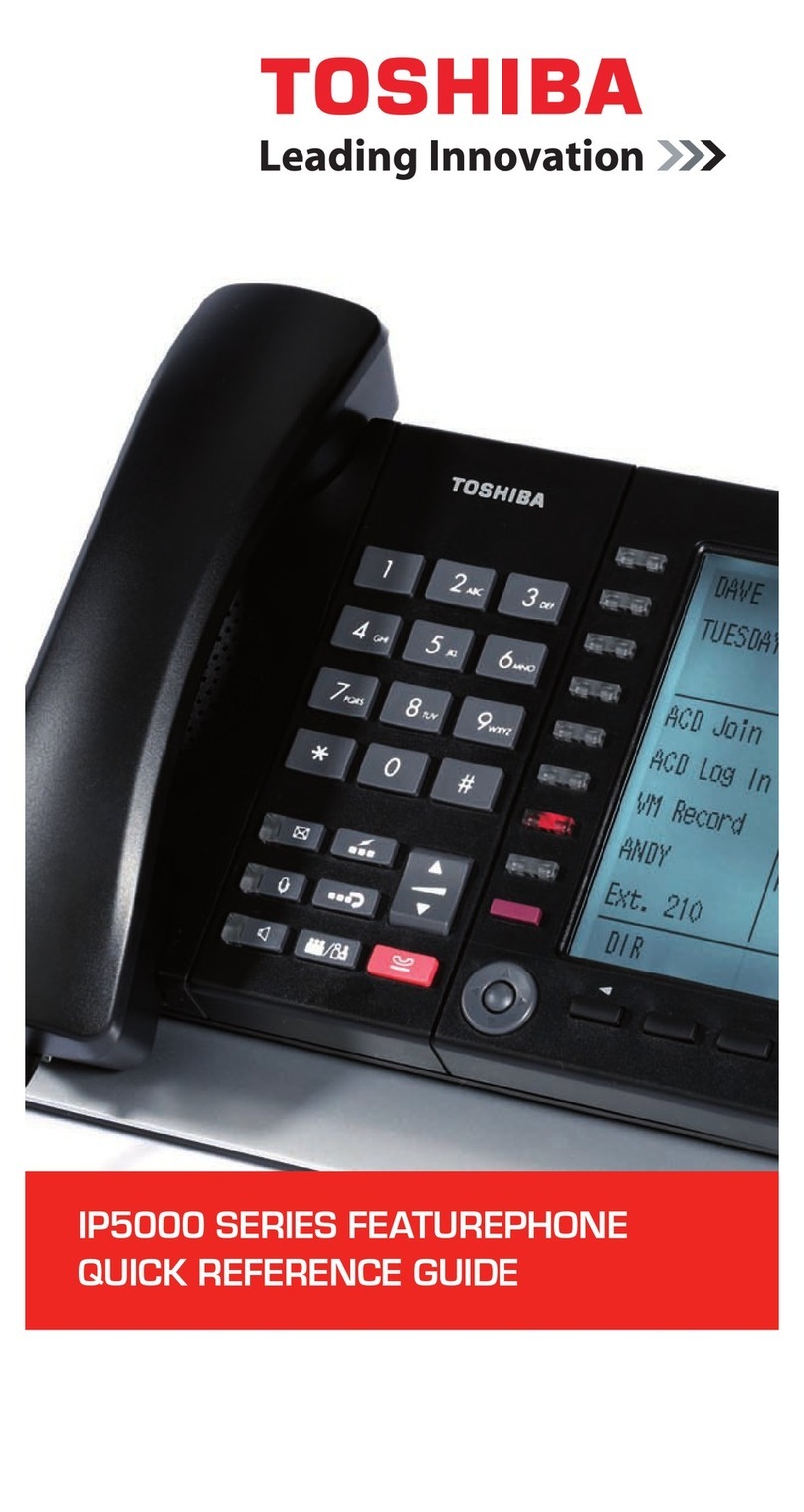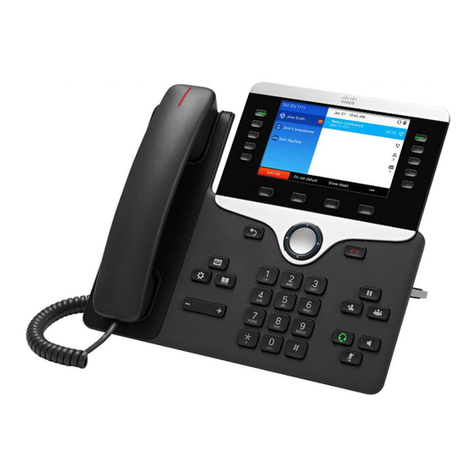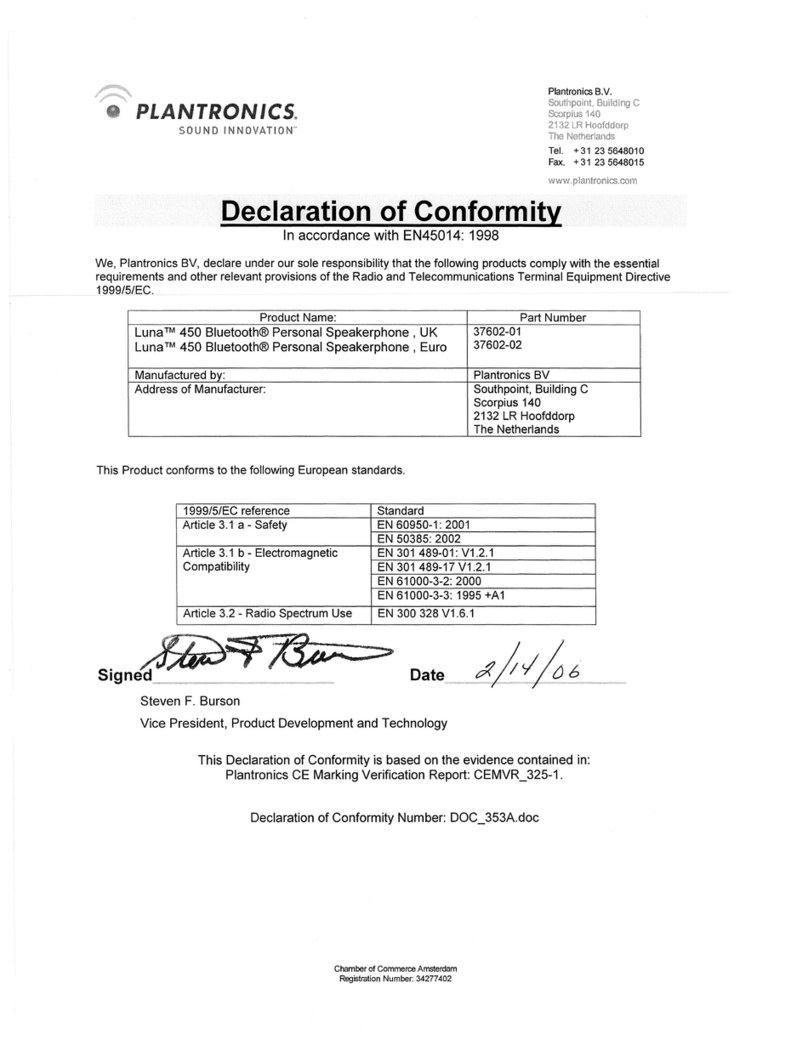Gigatelecom SC-7070 User manual

Service Manual SC-7070, Rev 1.0 24 September 2003
- 1 -
GSD556 SM_01.doc Gigatelecom Proprietary
Service Manual
SC-7070
Single Mode Digital CDMA Telephone
Gigatelecom Proprietary
Confidential Treatment Requested
Rev 1.0
26, August, 2003
Gigatelecom Corporation

Service Manual SC-7070, Rev 1.0 26, August, 2003
- 2 -
GSD556 SM_01.doc Gigatelecom Proprietary
TABLE OF CONTENTS
1. Introduction ................................................................................................................................. 3
2. Specification................................................................................................................................ 4
2.1 GSD556 Specifications............................................................................................................ 4
2.2 Battery Specifications .............................................................................................................. 5
2.3 AC Charger Specifications....................................................................................................... 5
3. Technical Description ................................................................................................................. 6
3.1 Overview.................................................................................................................................. 6
3.2 RF part Description.................................................................................................................. 9
3.2.1 Description of Frequency Synthesizer Circuit.................................................................... 9
3.2.2 Description of Rx Part Circuit .......................................................................................... 10
3.2.3 Description of Tx Part Circuit........................................................................................... 12
3.3 Logic Part Description............................................................................................................ 15
3.3.1 Keypad/LCD, Receptacle Part(CON451) ........................................................................ 15
3.3.2 Voice Processing Part .....................................................................................................15
3.3.3 Mobile Station Modem( ; MSM5100, U301)..................................................................... 15
3.3.4 Memory Part (U351) ........................................................................................................17
3.3.5 Power Supply Part........................................................................................................... 17
3.4 Power Up Sequence.............................................................................................................. 19
3.4.1 Place a Battery Pack ....................................................................................................... 19
3.4.2 Press and Hold [END] Key .............................................................................................. 19
3.4.3 Regulators Activated ....................................................................................................... 19
3.4.4 VCTCXO Activated..........................................................................................................19
3.4.5 Reset Pulses Generated ................................................................................................. 19
3.4.6 MSM5100(U301) Starts................................................................................................... 19
3.4.7 Phone Wakes Up............................................................................................................. 19
4. Servicing Tools ......................................................................................................................... 20
5. Measurement............................................................................................................................. 22
5.1 Measurement Configuration .................................................................................................. 22
5.2 CDG2 MENU ......................................................................................................................... 23
5.3 Hardware Control MENU .......................................................................................................23
6. Assembling and Disassembling .............................................................................................. 24
7. Replacing Parts......................................................................................................................... 31

Service Manual SC-7070, Rev 1.0 26, August, 2003
- 3 -
GSD556 SM_01.doc Gigatelecom Proprietary
1. Introduction
This manual provides the technical information to support the service activities of SC-7070 Single
mode Digital CDMA Telephone.
This manual is supplied in the electronic format for easy distribution and reference.
Also refer to the following documents:
-. Service Guide of SC-7070 phone

Service Manual SC-7070, Rev 1.0 26, August, 2003
- 4 -
GSD556 SM_01.doc Gigatelecom Proprietary
2. Specification
This chapter provides the product configuration and product specifications of the SC-7070
2.1 GSD556 Specifications
Item 800MHz Band
1 Type Approval Number
2 Radio Frequency Tx : 824 to 849MHz
Rx : 869 to 894MHz
3 Number of Channels 20 (CDMA)
4 Duplex Spacing 45MHz
5 Digital Mode
5.1 Channel Spacing 1.23MHz
5.2 Frequency Stability +/-300Hz
5.3 RF Output Power 23dBm ~ 27dBm
5.4 Receiver Sensitivity ≤-104dBm
5.5 Modulation/Demodulation OQPSK/QPSK
6 Operating Temperature -20 to +60 degrees Celsius
7 Power Source Lithium Ion Battery 3.7V, 550mAh
8 Dimensions Approx. 84×46×20 mm
9 Weight Approx. 78 g
Power Management
Talk Time (up to) Digital : 150min (10dBm/Voice activity 44%)
10
Standby Time (up to) Digital : 130 h (Slot mode 1)
11 Features
-. Two-Way Short Message Service (SMS)
-. Vibrating Alert
-. Multilingual (English/Chinese)
-. Voice Memo
-. 260K Color TFT LCD
-. BLUE Color Indicator LED
-. 40 Poly Melody
12 Protocol IS-95A / IS-95B/ IS-95C
13 Software Version
14 Production

Service Manual SC-7070, Rev 1.0 26, August, 2003
- 5 -
GSD556 SM_01.doc Gigatelecom Proprietary
2.2 Battery Specifications
Items
1 Battery Type Lithium Ion Battery
2 Battery Voltage 3.7V
3 Battery Capacity 550mAh
4 Recharging Time With Charger 3Hr MAX. at 550mAh Li-ion Battery
2.3 AC Charger Specifications
Items
1 Input Voltage AC100 - 240V +/- 10%, 50/60Hz
2 Output Voltage DC 4.2V
3 Output Current 600mA

Service Manual SC-7070, Rev 1.0 26, August, 2003
- 6 -
GSD556 SM_01.doc Gigatelecom Proprietary
3. Technical Description
3.1 Overview
The Tx and Rx part employs the Super-Heterodyne system. The Tx and Rx frequencies are
respectively 824.04~848.97MHz and 869.04~893.9MHz. The block diagram is shown in Figure 3.1.
RF signals received through the antenna are fed into the low noise amplifier (LNA, U651) through
the duplexer(DPX651). Then, they are combined with the signals of local oscillator (VCO, U702) at
the down conversion mixer(U602) in order to create the intermediate frequency (IF). The IF signal
created is sent out to each bandpass filter (BPF) through the CDMA switching, and then fed into
S1M8656A01-F0T0(U601). In S1M8656A01-F0T0(U601), the IF signal is changed into baseband
signal. Then, this signal is changed into the digital signal by the analog to digital converter (ADC,
A/D Converter), and the digital circuit part of the MSM5100(U301) processes the data from ADC.
The digital processing part is a demodulator.
In the case of transmission, The RFT3100(U501) receives digital signal from the MSM5100
(U301). In MSM5100(U301), the digital signal is changed into analogl signal by the digital to
analog converter (DAC, D/A Converter), and then the baseband quadrature signals are
upconverted to the Cellular IF frequency bands in RFT3100(U501).The Tx AGC in RFT3100
(U501) is designed to be gain-controlled from 85dB dynamic range. In RFT3100(U501), the Tx IF
frequency mixed with RF local frequency is created Tx RF frequency. After that, the RF signal is
amplified by the Power Amp in order to have enough power for radiation after going through the
attenuator. Finally, the RF signal is sent out to the cell site via the antenna after going through the
duplexer(DPX651).
MSM5100 (U301)
Mobile Station Modem
RFT3100 (U501)
TX Baseband IF Converter
S1M8656A01-F0T0(U601)
RX Baseband IF Converter
Memory
and
User
Interface
RF
SUBSYSTEM
(SPK)
(MIC301)
(ANT2)
Figure 3.1 Typical Subscriber Unit Block Diagram

Service Manual SC-7070, Rev 1.0 26, August, 2003
- 7 -
GSD556 SM_01.doc Gigatelecom Proprietary
Figure 3.2 SC-7070 Main Board Front View

Service Manual SC-7070, Rev 1.0 26, August, 2003
- 8 -
GSD556 SM_01.doc Gigatelecom Proprietary
Figure 3.3 SC-7070 Main Board Front View

Service Manual SC-7070, Rev 1.0 26, August, 2003
- 9 -
GSD556 SM_01.doc Gigatelecom Proprietary
3.2 RF part Description
The RF part consists of power part, synthesizing part, transmission and reception part.
3.2.1 Description of Frequency Synthesizer Circuit
The UHF band frequency synthesizer is composed of an indirect frequency synthesizer, Phase
Locked Loop (PLL IC, U701), VCO(U702) with the center frequency of 966.88MHz for CDMA
mode, Loop Filter and a directional coupler. PLL IC(U701)’s phase detector compares the
reference clock frequency (19.68MHz, TCXO(U705) clock) divided down to 10kHz by the
reference divider with a signal from the VCO(U702) divided by the PLL IC(U701) main divider.
Thus generating local oscillation signals with zero phase difference. These local oscillation signals
are used both for Tx and Rx. The local oscillation signals are separated for Tx and Rx by the
directional coupler. There are Rx and Tx IF synthesizers, respectively. The Tx IF synthesizer is
composed of the RFT3100(U501), Tx Tank circuit, and the loop filter. The Tx phase detector within
the RFT3100(U501) receives the oscillation signals from the tank circuit generating 260.76MHz Tx
IF. The Rx IF synthesizer is composed of the PLL, the S1M8656A01-F0T0(U601), the Rx Tank
circuit, and the loop filter. The signal generated from the tank circuit is sent through the
S1M8656A(U601) to the dual mode PLL’s phase detector. The PLL IC(U701) generates the control
voltage to the loop filter such that 170.76MHz Rx IF is synthesized.
Voltage Control Temperature Compensation Crystal Oscillator (VCTCXO, U705)
The temperature variation of mobile phone can be compensated by VCTCXO(U705). The
reference temperature of a mobile phone is -20~+60 °C. The VCTCXO(U705) receives
frequency tuning signals called TRK_LO_ADJ from MSM as 0.5V~2.5V DC via R and C
filter in order to generate the reference frequency of 19.68MHz and input it into the
frequency synthesizer of UHF band. Frequency stability depending on temperature is
within ±1.5 ppm.
RF Frequency Synthesizer
RF PLL loop is consisted of the RF PLL Synthesizer in the PLL IC(U701), loop filter, VCO
(U702) and VCTCXO(U705). It generates the RF local frequency of 954.38 ~979.38 MHz.
RX IF Frequency Synthesizer
Rx IF PLL Loop is consisted of the Rx IF PLL Synthesizer in the PLL IC(U701), VCO
included in the S1M8656A01-F0T0(U601), loop filter and VCTCXO(U705). The Rx VCO
output included in the S1M8656A01-F0T0(U601) oscillates twice Rx IF frequency of
170.76MHzand then generates the RX IF frequency of 85.38MHz by dividing the VCO
output frequency by two.
TX IF Frequency Synthesizer
The Tx IF PLL Loop is consisted of the Tx IF PLL synthesizer, VCO that is internally
installed in the RFT3100(U501), loop filter and VCTCXO(U702). The Tx VCO output
included the RFT3100(U501) generates Tx IF local frequency of 260.76MHz and then
generates the Tx IF frequency of 130.38MH by dividing the VCO output frequency by two.

Service Manual SC-7070, Rev 1.0 26, August, 2003
- 10 -
GSD556 SM_01.doc Gigatelecom Proprietary
3.2.2 Description of Rx Part Circuit
Cellular Receiver covers the frequency band of 869 ~ 894 MHz. IF frequency is 85.38MHz and
super-heterodyne circuit is used. The RF signal received is sent out to the RF AMP (LNA, U651)
via a duplexer(DPX651) for amplification and then, is sent out to the down mixer(U602). Here, the
RF signal is mixed with the VCO(U702) signal of 954.38 MHz ~979.38 MHz. IF signal down
converted by the down mixer(U602) are sent out to IFSAW Filter(F601) and only required signals
are selected. The signal that has passed the IF SAW filter(F601) is fed into AGC AMP that is
controlled by the power density modulated (PDM) signal of the MSM5100(U301) based on the
strength of received signal. This AGC AMP is tuned into the level corresponding to the input
window (input sensitivity) of the base band analog processor (S1M8656A01-F0T0, U601). The
AGC AMP controls Rx power level with 90dB dynamic range. The signal entered to
S1M8656A(U601) is converted again to 1.2288 MHz base band signal. To do second frequency
conversion, the frequency synthesizer in S1M8656A (U601) oscillates VCO(U702) at 170.76MHz
and these signals are divided by two in order to create 85.38MHz In-phase and Quadrature-phase
signal. These 85.38MHz I/Q oscillator signals are sent to MSM5100(U400) and used to convert RX
IF signals to I/Q base band signal. I and Q baseband signals are respectively sent out to the
analog digital converter via a low pass filter.
Duplexer (DPX651)
The duplexer(DPX651) consists of the Rx bandpass filter (BPF) and the Tx BPF which
have the function of separating Tx and Rx signals in the full duplex system for using the
common antenna. The Tx BPF is used to suppress noises and spurious out of the Tx
frequency band. The Rx BPF is used to receive only Rx signal coming from the antenna,
which is usually called preselector. Its main function is to limit the bandwidth of spectrum
reaching the LNA(U651) and down mixer(U602), attenuates receiver spurious response
and suppress local oscillator energy. As a result, the frequency sensitivity and selectivity of
mobile phone increase.
LNA (U651)
The characteristics of Low Noise Amplifier (LNA, U651) are low noise figure, high gain,
high intercept point and high reverse isolation. The frequency sensitivity characteristic of
mobile phone is mostly determined by LNA(U651).
Rx RF SAW Filter (F602)
The main function of Rx RF SAW filter(F602) is to attenuate mobile phone spurious
frequency, attenuate direct IF frequency pick up, attenuate noise at the image frequency
originating in or amplified by the LNA(U651) and suppress second harmonic originating in
the LNA(U651). The Rx RF SAW filter(F602) is usually called image rejection filter.
Down Mixer (U602)
The Down Mixer(U602) performs frequency translation by multiplying two signals. The
Downconversion mixer employed in the Rx path has two distinctly different inputs. One is
RF and the other is Local Osillator (LO) port. The RF port senses the signal to be
downconverted and the LO port senses the periodic waveform generated by the local
osillator

Service Manual SC-7070, Rev 1.0 26, August, 2003
- 11 -
GSD556 SM_01.doc Gigatelecom Proprietary
Rx IF SAW Filter (F601)
The Rx IF SAW filter(F601) protects its following stages from close-in Inter Modulation (IM)
signals, provides adjacent channel selectivity, and attenuates the second image.
S1M8656A01-F0T0 (U601)
CDMA Rx Signal
The circuit functions of the S1M8656A01-F0T0(U601) include Rx Automatic Gain
Controller (AGC) with 90 dB dynamic range, quadrature IF mixers, down-conversion mixer
from IF to base- band, low pass filters and Analog to Digital Converters (ADC) for
converting to digital baseband. The S1M8656A01-F0T0(U601) includes clock generators
that drive the digital processor and the VCO which generates the LO frequency for
baseband down- conversion.
The Rx AGC either amplifies or attenuates the received CDMA IF signal to provide a
constant-amplitude signal to the I/Q down converter. The IF output of the Rx AGC amplifier
separates into I-channel and Q-channel baseband components and down- converted by
mixer with quadrature LO. LO signals are generated by the Voltage Controlled Oscillator
VCO and frequency stabilized by external varactor-tuned resonant tank circuit. The I/Q
down converter outputs the CDMA signals at baseband frequency. Low-pass filtering
enables the receiver to select the desired baseband signals from the effects of unwanted
noise or adjacent-channel interference. I/Q base band components are converted to digital
signals by two identical 4-bit ADCs. The Block Diagram of the S1M8656A01-F0T0 (U601)
is shown in Figure 3.4.
Figure 3.4 S1M8656A01-F0T0 Functional Block Diagram

Service Manual SC-7070, Rev 1.0 26, August, 2003
- 12 -
GSD556 SM_01.doc Gigatelecom Proprietary
3.2.3 Description of Tx Part Circuit
The 8 bit digital signal fed into RFT3100(U501) passes through DAC using TXCLK and TXCLK/
as triggers to produce base band I/Q signal. Inside the MSM5100(U301), each signal is sent out to
the up mixer via a digital low pass filter. At the mixer, 130.38 MHz I/Q signal obtained by dividing
the 260.76MHz VCO signal by half is used as carrier for the up-conversion of base band signal to
Tx IF signal. This signal is again up-converted into Tx RF frequency signal. The signal converted
into Tx RF frequency is amplified at the drive amplifier. At the Tx AGC AMP, this Tx IF signal level is
varied according to the several parameters defined in mobile station and base station. The proper
gain control signal comes out from the MSM5100(U301) in the waveform of PDM and rectified to
constant DC voltage level by RC low pass filter. The gain variable range of Tx AGC AMP is 85 dB.
The signal is amplified at the power amplifier. Finally, it is transmitted out to antenna via a duplexer
(DPX651).
RFT3100 (U501)
The RFT3100(U501) Baseband-to-RF Transmit Processor performs all transmit(Tx) signal
processing functions required between digital baseband and the Power Amplifier(PA,
U551) for IS-95 CDMA Cellular application. The RFT3100(U501) incorporates the
previous-generation functionality of the IFT3000 Baseband-to-IF Processor together with
the RF upconversion and driver amplifiers. The RFT3100(U501) offers the most advanced
and integrated CDMA Tx solution providing a board area savings of more than 65% over
previous generation chipsets, along with minimized power consumption for extended talk-
time performance.
The RFT3100(U501) connects directly with QUALCOMM’s by the MSM5100(U301)
utilizing an analog baseband interface. The baseband quadrature signals are upconverted
to the Cellular band and amplified to provide signal drive capability to the PAM(U551). The
RFT3100(U501) includes an IF frequency, single sideband upconversion from IF to RF, two
cellular driver amplifiers, and Tx power control through an 85dB VGA. As added benefit,
the single sideband and driver amplifier providing overall board area and cost savings.
RFT3100(U501) functionality is specifically controlled from the MSM5100(U301) via the
three-line serial bus interface(SBI).
The Block Diagram of the RFT3100(U501) is shown in Figure 3.5.

Service Manual SC-7070, Rev 1.0 26, August, 2003
- 13 -
GSD556 SM_01.doc Gigatelecom Proprietary
Figure 3.5 RFT3100 Functional Block Diagram
Power Amplifier (U551)
The power amplifier(U551) that can be used in the CDMA has linear amplification
capability, whereas in the FM mode, it has a high efficiency. For higher efficiency, it is
made up of one MMIC (Monolithic Microwave Integrated Circuit) for which RF input
terminal and internal interface circuit are integrated onto one IC after going through the
GaAs HBT (heterojunction bipolar transistor) process. The module of power amplifier
(U551) is made up of an output end interface circuit including this MMIC. The RF transmit
signals that have been amplified through the power amplifier(U551) are sent to the
duplexer(DPX651).

Service Manual SC-7070, Rev 1.0 24 September 2003
- 14 -
GSD556 SM_01.doc Gigatelecom Proprietary
RX V C O
TA NK
RX V C O
TA NK
PLL
0。/ 90。
I
Q
RX A GC AM P
S1M8656A01-F0T0
CDMA_IF
CDMA_IF/
ADC
÷2
VCTCXO
SAMSUNG
TOB 196 8DPH 4KR A
Fc = 19. 68M H z
RX TXRX TXRX TX
Ex t . R F
Ant. Switch
MURATA
M M 8430- 2 60 0R A1
LNA_R ANGE
LNA
RFMD
RF2369
G = 15. 5dB
NF = 1.6dB
IIP3 = 11. 5dB m
Icc = 7.5m A
Mixer
TRIQUINT
T Q5M 31
G = 9dB
NF = 11dB
IIP3 = 8dB m
Idd = 11m A
Lo = -7~0dBm
170.76M Hz
260.76MHz
Gain Control
F req. = 85 .3 8M H z
VCO
FIJITSU
VC -3R 0A 90- 09 67 A
Pout = -1 ±2d B m
Freq . = 96 7 ±13MHz
Coupler
SAMSUNG
C PL S21D 10 00C L XX A
I.L < 0.7 5dB
Coupling = 10.0 ±1dB
Isolat ion > 2 0dB
PLL
PH ILIPS
SA 80 28W
PAM
CONNXANT
CX77105
Gd = 28dB
Ga = 28.5dB
Attenuator
π-type
I.L = 3dB
SW
TX V C O
TANK
TX V C O
TANK
LOGICBLOCK
AGC Gain Control
0。/ 90。
SBI &
CONTROL
PLL
RFT 3100
Isolator
HITACHI-METAL
ESI-4D C L08 36M 01- T
I.L < 0.7 5d B
Isolation >12dB
Clockwise
Tx Lo buffer Amp
NEC
2SC 5 01 0
G = 8.5dB
NF < 2.5dB
Du p le xer( C DM A )
SAMSUNG
X83 6KN
*TX
824~ 84 9M H z IL < 2.7dB ( M a x.)
869~ 89 4M H z R ej . > 40d B ( M in.)
*RX
869~ 89 4M H z IL < 3.8dB ( M a x.)
824~ 84 9M H z R ej . > 50d B ( M in.)
Isolation (TX to R X)
869~ 89 4M H z > 4 6d B ( M in.)
CDM A IF Filter
LG Innotek
FSM S00 85G 2
I.L < 12. 5dB
Ripple < 1.2dB
@ ±0.9M H z > 33d B c
@ ±1.7M H z > 35d B c
Tx RF Filter
SAMSUNG
H836NF
I.L < 3.0dB
Rx Rej. > 25dB
Ripple < 1.4dB
Rx RF Filte r
SAMSUNG
H881NF
I.L < 3.0dB
Tx R ej . > 40dB
Ripple < 1.4dB
LNA Bypass
Mode
G = -2dB
IIP3 = 24d Bm
Icc = 2m A
Ant en n a
IF BPF
MSM5100
HDET
Figur3.6 SC-7070 RF Part Block Diagram

Service Manual SC-7070, Rev 1.0 24 September 2003
- 15 -
GSD556 SM_01.doc Gigatelecom Proprietary
3.3 Logic Part Description
The logic part processes the user's commands and processes all the digital and voice signal
processing in order to operate in the phone. The logic part is made up of a keypad/LCD,
receptacle part, voice processing part, mobile station modem(MSM5100, U301) part, memory part
(U351), and power supply part.
3.3.1 Keypad/LCD, Receptacle Part(CON451)
This is used to transmit keypad signals to MSM5100(U301). It is made up of a keypad backlight
part that illuminates the keypad, LCD part that displays the operation status onto the screen, and a
receptacle(CON451;) that receives and sends out voice and data with external sources.
3.3.2 Voice Processing Part
The voice processing part is made up of an audio codec used to convert MIC(MIC301) signals
into digital voice signals and digital voice signals into analog voice signals, amplifying part for
amplifying the voice signals and sending them to the ear piece, amplifying part that amplifies ringer
signals coming out from MSM5100(U301), and amplifying part that amplifies signals coming out
from MIC(MIC301) and transferring them to the audio processor
3.3.3 Mobile Station Modem( ; MSM5100, U301)
The MSM5100(U301) integrates functions that support a CDMA subscriber unit. Subsystems
within the MSM5100(U301) include a CDMA processor, a QUALCOMM Code Excited Linear
Predication (QCELP) Vocoder, an Enhanced Variable Rate CODEC (EVRC) Vocoder, an
ARM7TDMI microprocessor, and assorted peripheral interfaces that are used to support other
functions.
MSM5100(U301) Internal Block
ARM Microprocessor Subsystem
The MSM5100(U301) uses an embedded ARM7TDMI microprocessor. The
ARM7TDMI microprocessor, through the system software, controls most of the
functionality for the Mobile Station, including control of the external peripherals such as
the keypad, LCD display, RAM and ROM/FLASH(U351) devices.
RF Interface
This block communicates with the MSM5100(U301) RF, IF and Analog Baseband
circuitry.
CDMA Subsystem: Digital IS-95B / IS-2000 1x MC Signal Processing.
Searcher engine
Demodulating fingers
Combining block
Frame de-interleaver
Convolution and Turbo coding/decoding
153.6kbps(SCH) forward link and Reverse link Simultaneously
Supplemental channel(SCH) support

Service Manual SC-7070, Rev 1.0 26, August, 2003
- 16 -
GSD556 SM_01.doc Gigatelecom Proprietary
IS-2000 Quick paging channel (F-QPCH) support
Reverse link subsystem
UART (Universal Asynchronous Receiver Transmitter)
Two identical UARTs, UART1 has dedicated pins while UART2 share multiplexed pins
with the Auxiliary PCM CODEC interface.
Vocoder Subsystem
The MSM5100(U301)’s QDSP2000 supports EVRC and QCELP13K vocoders. In
addition, the QDSP2000 has modules to support the following audio functions; DTMF
tone generation, DTMF tone detection, Tx/Rx volume controls, Tx/Rx automatic gain
control(AGC), Rx Automatic Volume Control(AVC), Ear Seal Echo Canceller(ESEC),
Acoustic Echo Canceller(AEC), Noise Suppression(NS), and programmable, 13-tap,
Type-I, FIR, Tx/Rx compensation filters. The MSM5100(U301)’s integrated
ARM7TDMI processor downloads the firmware into the QDSP2000 and configures
QDSP2000 to support the desired functionality.
General Purpose Interface Bus
The MSM5100(U301) has 48 general-purpose bi-directional input/output pins
(GPIO_INT[47:0]) that double as general-purpose interrupt inputs. Some of the
GPIO_INT pins have alternate functions supported on them. The alternate functions
include, USB interface, additional RAM, ROM/Flash(U500), general-purpose chip
selects, parallel LCD interface, and a UART interface. The function of these pins is
documented in the various software releases.
Serial Bus Interface
This interface is specifically designed to be a quick, low pin count control protocol for
Sammsung’s S1M8656A(U601) and RFT3100(U501) can be configured for different
operating modes and configured for minimum power consumption, extending battery
life in standby mode.
User Interface
MSM5100(U301) user interface comprises digital connections to the subscriber unit
ringer transducer, keypad and LCD display.
Mode Select and JTAG Interfaces
The Mode select inputs to the MSM5100(U301) determine overall mode of the ASIC.
The options under the control of the Mode select inputs are Native Mode which is the
normal subscriber unit operation and ICE Mode in which the on-chip ARM
microprocessor is disabled, allowing off-chip emulation by the ICE unit.
R-UIM
The R-UIM is a smart card for CDMA Cellular application. R-UIM provides personal
authentication that allows the MS or handset to be connected with the network. The R-
UIM card enables handset independence for the user by allowing the user to receive

Service Manual SC-7070, Rev 1.0 26, August, 2003
- 17 -
GSD556 SM_01.doc Gigatelecom Proprietary
or make calls, and receive other subscribed services from any R-UIM-equipped
handset.
The MSM5100(U301) provides a glueless control/data interface to the R-UIM socket
(CON201) and provides for low power applications
3.3.4 Memory Part (U351)
Components: Combination Memory [Flash Memory (64Mbit) + SRAM (32Mbit)]
Flash Memory (64Mbit)
Stores telephone's main and sub programs.
Main Programs: Call Processing, User Interface, Diagnostic Task
Sub programs: NAM Program, Test Program
Flash Memory was expanded to 8Mbits to handle Text Fonts and source code for add
services.
Included 1024Kbytes : NV parameter value Saving and Phone Book Data.
SRAM (32Mbit)
Stores changes in other person's system parameter and Data Task data Buffer and stack
of each task, and value ρ.
3.3.5 Power Supply Part
Power is supplied by battery or external source of which range is 3.2~4.2V voltage. It is sent
to LDO (Low dropout regulator), which supply 2.8V of Logic power. Supplied power to devices
by LDO is as follows.
MSM5100PBGA208 (U301)
FLASH (64M)+SRAM (32M) (U351)
TFT color LCD
Melody IC(U401)

Service Manual SC-7070, Rev 1.0 24 September 2003
- 18 -
GSD556 SM_01.doc Gigatelecom Proprietary
RF Part
R-UIM
(CON201)
MIDI (U401)
LCD
128*160
LDO
100mA
LDO
100mA
LDO
3V
150mA
LDO
(U151)
2.8V
250mA/
RESET
Logic
KEY
Battery I/O
(CON101)
Memory
64M+32M
(U500)
PLL USB
RF
Interface
CDMA
Processor
DFM
Processor
Voltage Regulator
HK ADCs
UART 1
ARM7TDMI
Micro-
processor
Subsystem
General
Purpose
Interface
Vocoder
EVRC 13K
CODEC
SBI
MODE Select
Interface
UART 2
PCM Interface
ANSI / IEEE 1149.1-1990
JTAG Interface
MSM5100 (U301)
Mobile Station MODEM
VCTCXO
(U705)
Sleep X-Tal
(X301)
Indicator
(U152)
(U153)
(U154)
Motor
MIC
(MIC301)
Ear jack
(J401)
Speaker
Figure3.7 SC-7070 Logic Part Block Diagram

Service Manual SC-7070, Rev 1.0 24 September 2003
- 19 -
GSD556 SM_01.doc Gigatelecom Proprietary
3.4 Power Up Sequence
This section describes the steps how the SC-7070 phone wakes up.
3.4.1 Place a Battery Pack
When the battery pack is placed into the phone, FU101 protects the SC-7070 circuit against
unstable power supply.
3.4.2 Press and Hold [END] Key
The Power on circuit (D151) generates the control voltage to be used for U151.
3.4.3 Regulators Activated
U305 feeds 2.8V to MSM5100 (U301), Main LCD and others.
U305 feeds 2.8V to Flash ROM / SRAM (U351) and others.
U306 feeds 3.0V to VCTCXO(U705) and others.
3.4.4 VCTCXO Activated
When the power is fed to the VCTCXO(U705), it generates 19.68MHz to be used for the MPU
clock.
3.4.5 Reset Pulses Generated
a) The reset pulse for Flash ROM and SRAM (U351) is generated with R351,C352 (RC delay
circuits ) when it feeds the power.
b) The reset pulse (RESET/) for the MPU is generated with U704 right after the item a).
c) The reset pulse (RESOUT/) for the LCD is generated with MSM5100(U301) right after the item
b).
3.4.6 MSM5100(U301) Starts
Base on the reset pulse b), the MSM5100(U301) starts to operate including accesses to the
Flash ROM and SRAM (U351). The watchdog timer operates repeatedly.
3.4.7 Phone Wakes Up
Under control of the MSM5100(U301), the phone displays a wake-up animation, turn the
backlight on and sounds a beep tone.

Service Manual SC-7070, Rev 1.0 26, August, 2003
- 20 -
GSD556 SM_01.doc Gigatelecom Proprietary
4. Servicing Tools
This chapter provides information for the servicing tools of SC-7070 Single mode digital CDMA
Telephone.
SC-7070 Service tools
No. Item Description
1 L/T(Level Translator) Provides the interface of the RS-232C data and CDMA R/Tx audio
2 Curl Cord Connects the L/T and the SC-7070 phone
3 Mobile S/W Cable Connects the Test station and SC-7070 phone for RF testing
4 RS-232C Cable Connects the L/T and the PC for RS-232C data Communication
5 DC Power Cable Connects the L/T and the Power supply
Insertion Loss of Mobile S/W Cable
Item Typical Loss
1 Mobile S/W Cable insertion loss at 800MHz band 0.7 dB
2 Mobile S/W Cable insertion loss at 1900MHz band 1.0 dB
Up
Down
Data Port 1Data Port 2
PHONE
JTAG Port
Audio INAudio OUT
OFF OFF
ON ON Ext DC
Batt DC
RS-232C
JTAG
Data
Sense
Test
Mode
Power
Select
PCM
Audio
<L/T(LevelTranslator)> <CurlCord>
<MobileSwitchCable> <RS-232CCable>
< DC Power Cable >
Figure 4.1 SC-7070 Servicing tools
Table of contents
